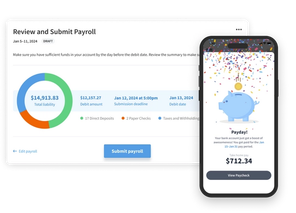
Eddy’s HR Mavericks Encyclopedia
The world's largest free encyclopedia of HR, with 700+ HR articles and podcasts.
Created by Eddy and our HR Mavericks community.
LGBTQ+ Inclusion
According to a 2021 Gallup poll, over 18 million U.S. adults identify as part of the LGBTQ+ community. Read on to learn how to make your workplace inclusive of LGBTQ+ employees.
What Is LGBTQ+ Inclusion?
LGBTQ+ inclusion in the workplace refers to the practice of making LGBTQIA+ (lesbian, gay, bisexual, transgender, queer, intersex, asexual, and more) employees feel safe, welcome, and included in their companies and workspaces.
Why is LGBTQ+ Inclusion Important?
All humans have a need and desire to be seen and heard, to feel valued and validated, and to be positive contributors to society. This holds true in the workplace, too. Employees want to feel like they matter and belong.
- LGBTQ+ individuals have protected class status. Many states have anti-harassment/anti-discrimination laws protecting sexual orientation and/or gender identity/expression. Employers are required to provide environments free from discrimination and harassment. Failure to create a workplace that is inclusive of LGBTQ+ employees can lead to incidents of microaggressions, harassment, and discrimination, which in turn can leave an employer vulnerable to litigation.
- LGBTQ+ inclusion increases engagement and reduces turnover. As do all employees, LGBTQ+ employees want to feel like they belong and can contribute to their workplaces. Inclusion efforts help give them a sense of engagement, which can lead to better productivity, fewer absences, and lower turnover rates.
- Inclusive companies are more successful overall. According to numerous studies, including long-range studies by companies like McKinsey, companies who prioritize DEI (diversity, equity, and inclusion) are more profitable,
Examples of LGBTQ+ Inclusion in the Workplace
Below are some examples of what successful LGBTQ+ inclusion looks like in an organization.
Authenticity and Acceptance
It might sound overly simplistic, but easy examples of LGBTQ+ workplace inclusion can be as simple as paying attention to how employees talk about non-work subjects, such as home lives. If heterosexual employees feel comfortable talking about their spouses and families, but LGBTQ+ employees don’t, they may fear they will not be accepted. But in workplace cultures where Chris is just as comfortable talking about his non-binary partner as Sam is talking about his wife, chances are good that there’s a level of acceptance in the workplace for LGBTQ+ individuals.
LBTQ+ Comfort and Cultural Identity
A company’s cultural identity is the collective way their culture looks, feels, and communicates itself. Using pronouns in email signatures and on Zoom meetings is one way of communicating gender identity/expression inclusiveness. Pronouns should never be required or forced, but including them can be an invitation. Leaders can act as allies and set an example by sharing their own pronouns at the start of a meeting and inviting others to do the same. Companies can also move from traditional “men’s” and “women’s” restrooms to more inclusive models, such as single-use, “all-gender” restrooms, or include signage to reflect a more expansive view of gender, such as “gender diversity welcome.” Cultural identity can be communicated in different ways at different companies. For example, some companies may have employee posters featuring a broad spectrum of identities.
Methods for LGBTQ+ Inclusion in the Workplace
Below are a few ways to begin evaluating and implementing more inclusive practices in a workplace.
Policy Review
Many employment/workplace policies, especially those that have been around for some time, can have disparate impacts on LGBTQ+ employees. An example of this type of policy is the traditional “maternity” leave policy that benefits a biological birthing parent. A more progressive and inclusive parental leave policy allows anyone, regardless of gender or sexual orientation, to take leave to bond with a new child through birth or adoption. Taking the time to review organizational policies with an eye for inclusivity can lead to much greater inclusion of LGBTQ+ employees.
Explicit Anti-Harassment/Anti-Discrimination Policy and Reporting Procedures
Specifically calling out sexual orientation and gender identity/expression as protected in company anti-harassment and anti-discrimination statements is an easy way to be more inclusive. This policy should also have a robust grievance policy and procedure that is clear and easy to follow so that if incidents of harassment/discrimination do occur, employees know how to address and resolve them.
Active Anti-Bias Training Practices
Actively training staff on anti-bias perspectives, unconscious bias, gender justice, and LGBTQ+ acceptance and inclusion is a great way to ensure your organization is communicating a shared set of values to all staff.
Onboarding
Onboarding is the first major touchpoint after the hiring process and an important opportunity to make a great first impression on new hires. For non-LGBTQ+ employees, this means setting the tone for how you expect your LGBTQ+ employees to be treated. For LGBTQ+ employees, this means helping them feel a sense of inclusion and belonging from day one.
Affinity Spaces
Affinity groups or spaces are a great sign that a workplace is inclusive. These are company-sponsored (and often funded) groups for historically excluded populations. In this case, it might be a group for LGBTQ+ professionals.
Topics

Tammi Burnett
Tammi has 8+ years of progressive HR experience in a variety of industries and settings, including nonprofit and higher education. She believes that doing HR well means being a true partner and collaborator with every part of an organization, and by saying "yes" to creative problem solving wherever and whenever possible (and legal). Her favorite work includes diversity, equity, inclusion, and belonging (DEIB); the how and why of hiring and retaining great people; helping to sustain an organizational culture of trust, empathy, and candor; and anything else that prompts employees to say they love where they work. In her free time, you can find her wandering outdoors, studying clinical herbalism, tinkering in the kitchen, dismantling the patriarchy and white supremacy, and hanging out with her cat, Emily Dickinson.
Frequently asked questions
Other Related Terms
Eddy’s HR Mavericks Encyclopedia
LGBTQ+ Inclusion
According to a 2021 Gallup poll, over 18 million U.S. adults identify as part of the LGBTQ+ community. Read on to learn how to make your workplace inclusive of LGBTQ+ employees.
What Is LGBTQ+ Inclusion?
LGBTQ+ inclusion in the workplace refers to the practice of making LGBTQIA+ (lesbian, gay, bisexual, transgender, queer, intersex, asexual, and more) employees feel safe, welcome, and included in their companies and workspaces.
Why is LGBTQ+ Inclusion Important?
All humans have a need and desire to be seen and heard, to feel valued and validated, and to be positive contributors to society. This holds true in the workplace, too. Employees want to feel like they matter and belong.
- LGBTQ+ individuals have protected class status. Many states have anti-harassment/anti-discrimination laws protecting sexual orientation and/or gender identity/expression. Employers are required to provide environments free from discrimination and harassment. Failure to create a workplace that is inclusive of LGBTQ+ employees can lead to incidents of microaggressions, harassment, and discrimination, which in turn can leave an employer vulnerable to litigation.
- LGBTQ+ inclusion increases engagement and reduces turnover. As do all employees, LGBTQ+ employees want to feel like they belong and can contribute to their workplaces. Inclusion efforts help give them a sense of engagement, which can lead to better productivity, fewer absences, and lower turnover rates.
- Inclusive companies are more successful overall. According to numerous studies, including long-range studies by companies like McKinsey, companies who prioritize DEI (diversity, equity, and inclusion) are more profitable,
Examples of LGBTQ+ Inclusion in the Workplace
Below are some examples of what successful LGBTQ+ inclusion looks like in an organization.
Authenticity and Acceptance
It might sound overly simplistic, but easy examples of LGBTQ+ workplace inclusion can be as simple as paying attention to how employees talk about non-work subjects, such as home lives. If heterosexual employees feel comfortable talking about their spouses and families, but LGBTQ+ employees don’t, they may fear they will not be accepted. But in workplace cultures where Chris is just as comfortable talking about his non-binary partner as Sam is talking about his wife, chances are good that there’s a level of acceptance in the workplace for LGBTQ+ individuals.
LBTQ+ Comfort and Cultural Identity
A company’s cultural identity is the collective way their culture looks, feels, and communicates itself. Using pronouns in email signatures and on Zoom meetings is one way of communicating gender identity/expression inclusiveness. Pronouns should never be required or forced, but including them can be an invitation. Leaders can act as allies and set an example by sharing their own pronouns at the start of a meeting and inviting others to do the same. Companies can also move from traditional “men’s” and “women’s” restrooms to more inclusive models, such as single-use, “all-gender” restrooms, or include signage to reflect a more expansive view of gender, such as “gender diversity welcome.” Cultural identity can be communicated in different ways at different companies. For example, some companies may have employee posters featuring a broad spectrum of identities.
Methods for LGBTQ+ Inclusion in the Workplace
Below are a few ways to begin evaluating and implementing more inclusive practices in a workplace.
Policy Review
Many employment/workplace policies, especially those that have been around for some time, can have disparate impacts on LGBTQ+ employees. An example of this type of policy is the traditional “maternity” leave policy that benefits a biological birthing parent. A more progressive and inclusive parental leave policy allows anyone, regardless of gender or sexual orientation, to take leave to bond with a new child through birth or adoption. Taking the time to review organizational policies with an eye for inclusivity can lead to much greater inclusion of LGBTQ+ employees.
Explicit Anti-Harassment/Anti-Discrimination Policy and Reporting Procedures
Specifically calling out sexual orientation and gender identity/expression as protected in company anti-harassment and anti-discrimination statements is an easy way to be more inclusive. This policy should also have a robust grievance policy and procedure that is clear and easy to follow so that if incidents of harassment/discrimination do occur, employees know how to address and resolve them.
Active Anti-Bias Training Practices
Actively training staff on anti-bias perspectives, unconscious bias, gender justice, and LGBTQ+ acceptance and inclusion is a great way to ensure your organization is communicating a shared set of values to all staff.
Onboarding
Onboarding is the first major touchpoint after the hiring process and an important opportunity to make a great first impression on new hires. For non-LGBTQ+ employees, this means setting the tone for how you expect your LGBTQ+ employees to be treated. For LGBTQ+ employees, this means helping them feel a sense of inclusion and belonging from day one.
Affinity Spaces
Affinity groups or spaces are a great sign that a workplace is inclusive. These are company-sponsored (and often funded) groups for historically excluded populations. In this case, it might be a group for LGBTQ+ professionals.
Topics

Tammi Burnett
Tammi has 8+ years of progressive HR experience in a variety of industries and settings, including nonprofit and higher education. She believes that doing HR well means being a true partner and collaborator with every part of an organization, and by saying "yes" to creative problem solving wherever and whenever possible (and legal). Her favorite work includes diversity, equity, inclusion, and belonging (DEIB); the how and why of hiring and retaining great people; helping to sustain an organizational culture of trust, empathy, and candor; and anything else that prompts employees to say they love where they work. In her free time, you can find her wandering outdoors, studying clinical herbalism, tinkering in the kitchen, dismantling the patriarchy and white supremacy, and hanging out with her cat, Emily Dickinson.
Frequently asked questions
Other Related Terms
Eddy's HR Newsletter
Sign up for our email newsletter for helpful HR advice and ideas.


